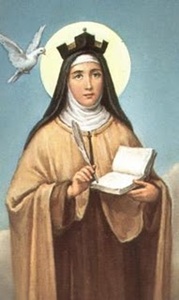The Church and chess.

The author at the VII PCCC.
To pawns belongs the kingdom of heaven.
2012-10-18.
No! The title does not refer to any conflicts within the church. It will really be about chess ... At the beginning of October I participated in the International Chess Championship of the Clergy in Rome. There were 3 Poles, 1 Indian, one Filipino and a few Italians. I managed to take the 4th place. It could have been better, but it could also have been worse, as there were good players. It is enough to note that the winner of the previous tournament (in 2010 in Carugate near Milan), Fr. Valerio Piro of Naples, who holds the chess category “candidate for the champion”, came only 5th in Rome. Franciscan Marcello Bonforte of Chieti won.
It is worth mentioning that in Poland priests’ chess tournaments have been held for 11 years. Recently games were held in Łomża, and Fr. Stanisław Bąk of the Przemyśl Archdiocese became champion. “The Church and chess” is a topic that has its own history. It turns out that at the beginning of the second millennium clergy passionately abandoned themselves to different games, including chess, neglecting their pastoral duties for this reason. In the year 1061 St. Peter Damian writes a letter to Pope Alexander II to ban the game of chess, which he is defines as “unfair, absurd and obscene.” It should be noted here that at the time, the game of chess was sometimes combined with throwing dice, which decided which piece should move.
All this, in order to “tweak” betting on money. The straw that broke the camel’s back was the fact that because of the game of chess the bishop of Florence did not come to the cathedral, where crowds of believers were gathered waiting for the Mass under his leadership. The Florentine hierarch was punished and chess was recognised as a vile game. Let us note, however, that in fact it was not about the game itself, but about the use made of it by people, including priests. In the fifteenth century, there were a variety of spectacular “stakes of vanity” in which dice, cards, and chessboards were burnt. Saint Bernardine of Sienna in 1425 in Perugia spoke so ardently against vain pastimes that in response people brought a variety of items for games, including chess, to burn in the square.
Supposedly a monastic confrere of St. Bernardine in Barcelona burnt 2600 chessboards in one day. Similar stacks in Florence were arranged by the famous Jerome Savonarola. One of the witnesses of those events recorded that the stack was built 30 ells high, in which “there was a considerable number of chessboards and other similar instruments of Satan.” Chess has been rehabilitated thanks to the Medici, and in particular thanks to son of Lorenzo the Magnificent, John, who in 1513 became Pope Leo X. It turned out that from his youth he had been a passionate chess player and as the Pope officially restored chess as a fair way of spending free time. In the “History of the Popes” Ludwig von Pastor says, “Pope Leo usually surrendered a game when he had a losing position, which shows his competence, he saw what was about to happen much earlier ...”. Indeed, today in a game of chess on a higher level, it would be embarrassing to play until the end, until one is checkmated. Chess even has its patroness.
In 1944 Spanish bishops recognised Saint Teresa of Ávila (d. 1582) as the patroness of chess players, who - as described by Henryk Szubzda in “Curiosities of chess” - as a child used to play chess with her father and brothers. No wonder, then, that she once said, “Sometimes, however, as they say, you can even play chess.” The other nuns once asked Teresa to write a book about the contemplative life. Teresa tried to fulfil the request. She gave the first 15 chapters to the sisters to read, before the publication of the work. They, however, were slightly disappointed, because they awaited deliberations on great mysticism, while Teresa wrote about quite ordinary matters, such as humility and sincerity. In the next chapter of “The Way of Perfection”, which we are talking about, Teresa responds to this disappointment: “I am just setting pieces on a chessboard, so to speak, before I begin the game ... For sure, who does not know how to set chess figures cannot play, either; who cannot give the check, cannot give the mate”.
More such analogies between spiritual life and chess can be found in St. Teresa’s work. Saint Francis de Sales (d. 1622) wrote favourably about chess as a good and fair game in itself. He only warned against going overboard. “Someone who played chess for 5 or 6 hours gets up from the board spiritually exhausted.” Although I would debate with de Salez, whether it is spiritual or rather psycho-physical fatigue. Among various chess metaphors I like best the one I found in a book of Fabia Stassi “Capablanca rematch.” Cuban chess genius Capablanca poses a question, “What does a pawn dream about?". And he answers: “To change its nature. To achieve the eighth line. Not to accept the misery of its condition.” The key is the anxiety of metamorphosis, the dream of pawns to become queen. “Indeed, in a game of chess a pawn, if it reaches the last line, it can become queen, can be transformed. Is it not a beautiful metaphor of human fate, of a fragile and limited man who has, however, a wonderful perspective ahead of transfiguration, becoming king? “They are just pawns” the haughty of this world say about the lowly ones. But to pawns belongs the kingdom of heaven ...
Fr. Dariusz Kowalczyk - Jesuits
Source:Gość Niedzielny - Kościół i szachy.


